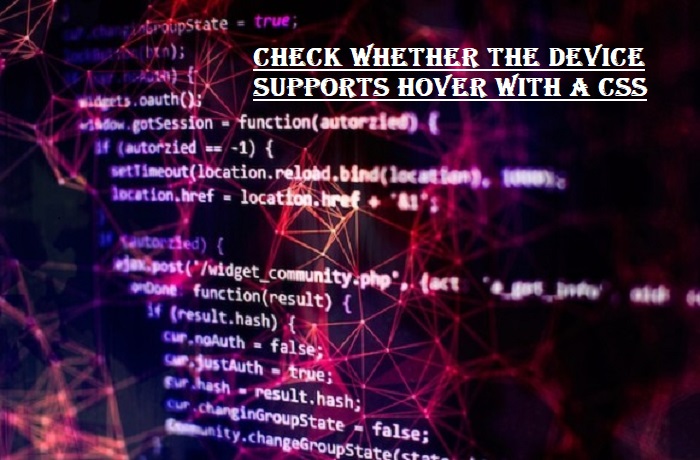
CSS, or “Cascading Style Sheets,” is a programming language used to layout and structure web pages (HTML or XML). This language comprises “cascading style sheets,” which contain coding elements.

The ability to offer the same markup page in various styles for distinct rendering techniques, including on, in print, by voice (through speech-based browsing or screen translator), and on Braille-based interactive applications, is also made possible by the separation of formatting and content. CSS contains rules for different configurations if the information is accessible on a mobile device.
CSS is a basic syntax that specifies the names of many style properties using a handful of English keywords.
How does the device hover in CSS?
Although checking whether a device supports hover with CSS appears to be a simple problem, it proves to be rather difficult to solve. By exploring content from some websites, we found it will only appear if a user hovers over or focuses on a link. The link, on the other hand, has its target.

When a touch screen user clicks one of such links displayed on such sites, the browser gets to the “href” location right away. This means that the contents of the hover are never seen, and that’s it!
Users without a mouse (or another device that can hover like a magic remote control) should see alternative content. But how can I tell whether this is the case?
The disparity between typical mouse-like pointers and devices with touch input, such as smartphones, makes hover effects difficult. On a touch device, we don’t have the same continuous pointer input as we do with a mouse, but the design of a site should nevertheless indicate which items are interactive, ignoring such facts.
See also: 5 Awesome CSS hover effects and their codes
Solution
Let’s try and solve this challenge of device hover in CSS by using color to communicate interaction. Hovering over an element with a mouse-like pointer will allow users to test its interaction with it. Interactive items will be highlighted with a strong backdrop color when they hover. And because touch device users won’t be able to hover, we’ll utilize the highlighted background color for interactive parts at all times. We hope it makes sense to you.
Example:-
Now to check and prove this right, let’s go for a basic example:-
- Go and select a blank HTML page and insert,
<button>Button</button>
(We’ll add CSS styles soon, but first, we’ll create an interactive element to experiment with: a button.)
Buttons have a very common function, as we all know, but they come in various shapes and sizes, so it’s critical to express visually that they’re interactive. To signify the interactivity of buttons, we’ll use a yellow backdrop.
We’ll write our CSS to default to mobile device styles, and we’ll use media queries to adjust the techniques for other devices, as usual.
So let’s begin by decorating the button with a yellow background to represent interaction, as stated above.
Insert,
button {
background: yellow ;
}
To see if the client device supports hover in CSS? For this, we’ll use the hover media feature in a query. We’ll add this media query to our stylesheet to apply styles to hover-capable devices.
@media ( hover : hover ) {
Button {
background: white :
}
Button : hover {
background : yellow :
}
}

Now, time for results.
After the above procedure, hover media can either report “hover” or “none.” Hovering gadgets will report with the option “hover,” while non-hovering devices will report “none.”
Hovering over buttons will now override the default button styles, allowing users to test interactivity while hovering. It’s that simple! Regrettably, I wasted years without employing this useful media query, and I was stymied by my hover styles quandary the entire time.
So, for different times, whenever you want to go to check whether the device hover in CSS or not, go for it!
Thanks for checking out my guide. If you are looking for more tech resources and want to read in-depth guides, I would recommend checking out realpythonprojects.
